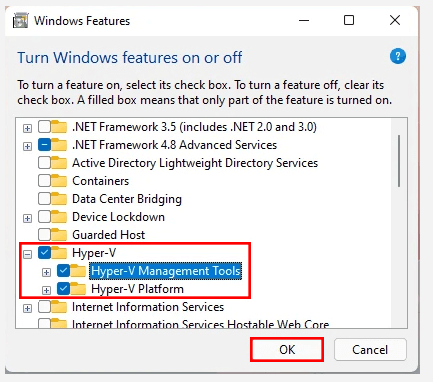

But some systems have virtualization disabled from BIOS. Most modern computers support all the requirements of Hyper-V. If these requirements are met, the results will display “Yes.” However, if you find that “Virtualization Enabled In Firmware” states “No,” you need to enable it using the guide below. This will generate a list, and you will find the section “Hyper-V Requirements” at the end of the list containing the details of the 4 requirements, as in the image below: Check Hyper-V requirements Run the following cmdlet in an elevated Command Prompt and obtain the results on the four requirements: systeminfo

Select Programs and Features on the right under related settings. Right click on the Windows button and select ‘Apps and Features’. Open up a PowerShell or CMD session as Administrator.ĭISM /Online /Enable-Feature /All /FeatureName:Microsoft-Hyper-Vįor more information about DISM, see the DISM Technical Reference. Among its many applications, DISM can enable Windows features while the operating system is running.

The Deployment Image Servicing and Management tool (DISM) helps configure Windows and Windows images.

When the installation has completed, reboot. If the command couldn't be found, make sure you're running PowerShell as Administrator. Open a PowerShell console as Administrator.Įnable-WindowsOptionalFeature -Online -FeatureName Microsoft-Hyper-V -All Upgrade from Windows 10 Home edition to Windows 10 Pro by opening up Settings > Update and Security > Activation.įor more information and troubleshooting, see Windows 10 Hyper-V System Requirements. The Hyper-V role cannot be installed on Windows 10 Home.


 0 kommentar(er)
0 kommentar(er)
